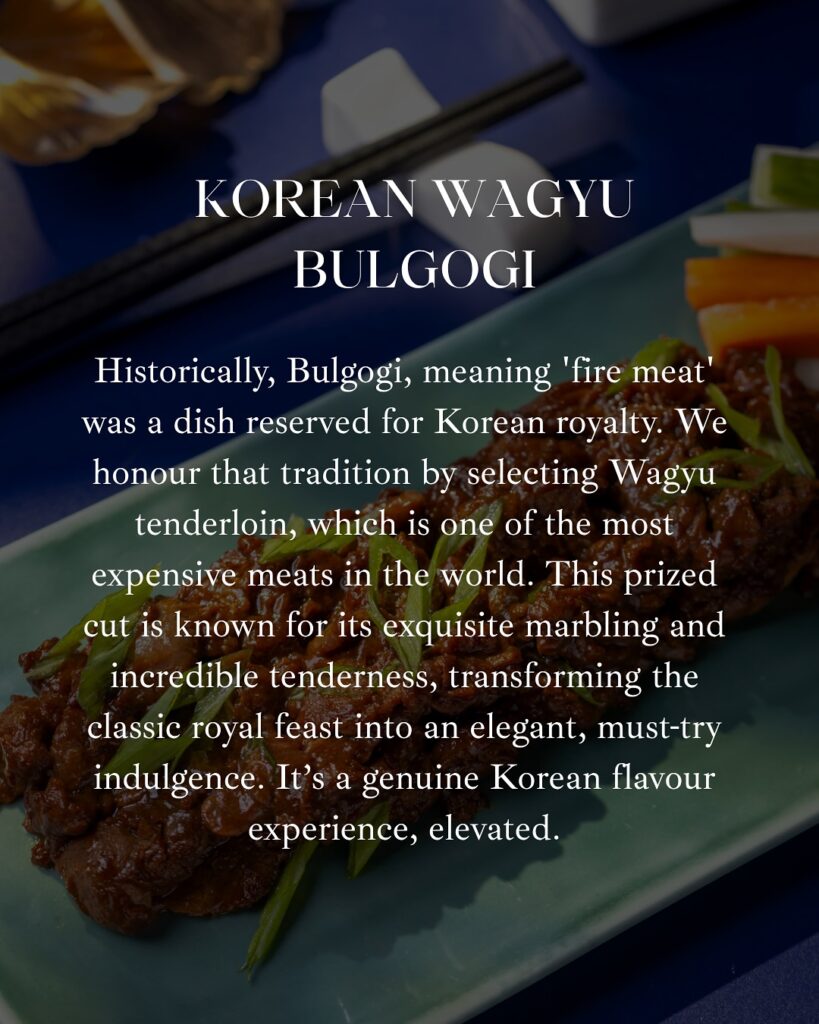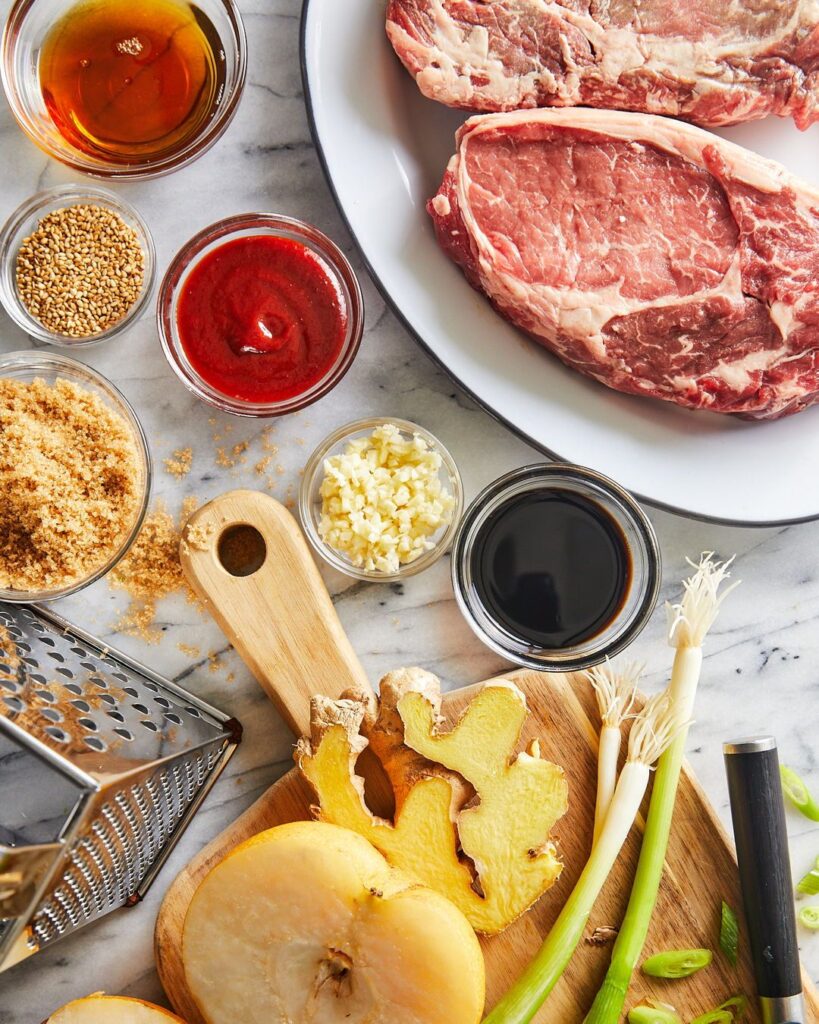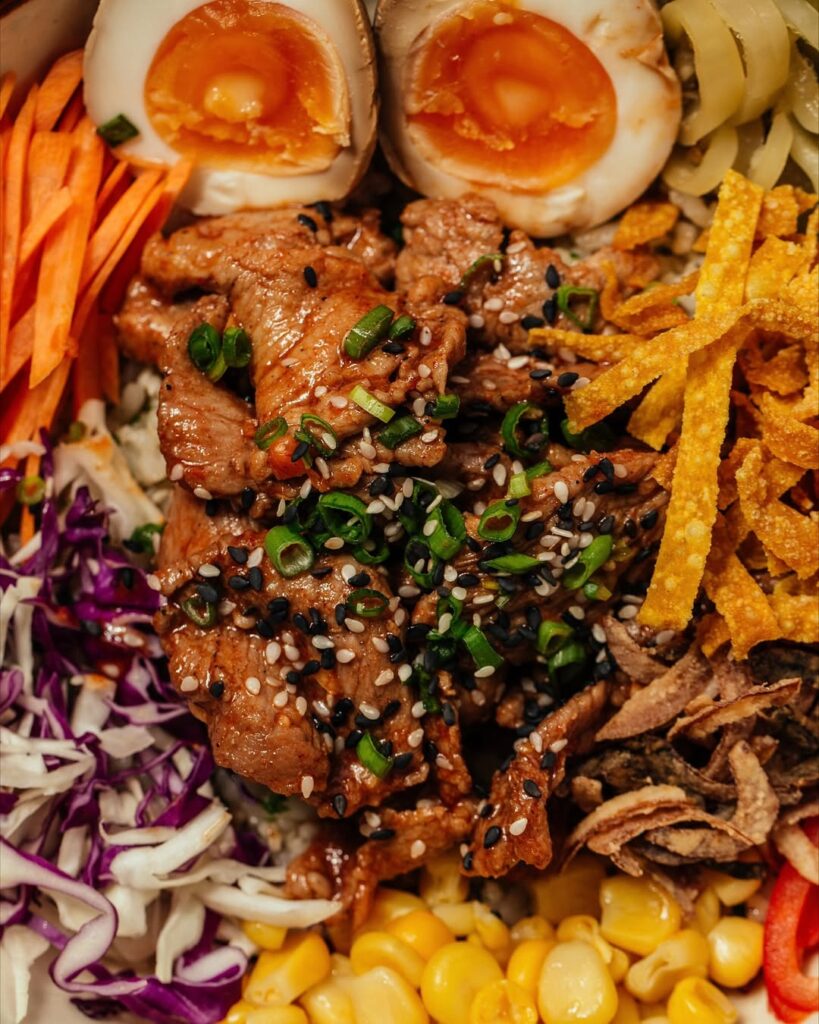If you’ve ever walked past a Korean BBQ restaurant and smelled that sweet, smoky aroma, you probably stopped in your tracks. That smell? That’s Korean bulgogi, and it’s the dish that has people around the world hooked.
Think of it as marinated, thinly sliced beef that’s tender, flavorful, and quick to cook. It’s sweet, salty, a little nutty from sesame oil, and downright addictive. And the best part? You don’t need a fancy grill or a backyard pit to make it at home.
As a pitmaster who’s spent decades coaxing flavor out of everything from brisket the size of a suitcase to ribs that vanish within minutes, I can tell you: Korean bulgogi is one of the most satisfying, beginner-friendly BBQ dishes out there.
What Exactly Is Korean Bulgogi?
At its core, Korean bulgogi literally means “fire meat.” Traditionally, it’s thinly sliced beef grilled over open flames, but at home, you can achieve nearly the same effect on a skillet, wok, or broiler.
What makes it special? A few things:
- Thin beef slices = rapid cooking + flavor absorption.
- Marinade = a perfect balance of sweet, salty, and umami flavors.
- Quick cooking = minimal fuss, maximum flavor.
Unlike tougher cuts that need hours in a smoker, bulgogi relies on technique and seasoning rather than time. That’s why people rave about it – it’s fast, tender, and ridiculously flavorful.

A Brief History of Bulgogi
Bulgogi isn’t just delicious – it’s cultural heritage.
- Origins: Dating back to the Goguryeo era (37 BCE – 668 CE), it was originally a royal delicacy before spreading to commoners.
- Evolution: Over centuries, cooking methods shifted from charcoal pits to tabletop grills, and modern homes adapted with pans and woks.
- Global Reach: Thanks to Korean cuisine’s worldwide popularity, bulgogi has become a must-try for anyone exploring K-food.
Fun fact: In Korea, bulgogi is a dish for celebrations and family gatherings, showing up at everything from birthday feasts to weekend dinners. It’s more than food – it’s community in a marinade.
Why Korean Bulgogi Is So Popular Worldwide
So why are people obsessed?
- Balanced flavor: Sweet, salty, umami, nutty, and a little smokiness if you grill.
- Tenderness: Thanks to fruit-based marinades and thin slicing, even novices get soft, melt-in-your-mouth results.
- Quick and easy: Minimal prep, short cooking time.
- Versatility: Serve it on rice, in wraps, bowls, or even tacos.
- Cultural allure: Korean dramas, K-pop, and foodie trends have made it a household name.
If you’ve ever wondered why Korean bulgogi dominates Instagram feeds and dinner tables alike, it’s these factors working in perfect harmony.
The Science Behind Tender Bulgogi
Tender beef doesn’t happen by accident. Here’s what makes Korean bulgogi so soft:
- Thin slicing: Reduces cooking time and makes each bite easy to chew.
- Fruit enzymes: Korean pear, apple, or pineapple in the marinade break down tough proteins.
- Soy sauce + sugar: Salt and sugar penetrate the meat, adding flavor and moisture.
- Marination time: Minimum 30 minutes; ideally 1–2 hours for full flavor.
Pitmaster tip: Over-marinating (think overnight for delicate cuts) can make meat mushy. Treat the marinade like a spa session – not a horror story.

Traditional Ingredients and Their Roles
Every ingredient has a job:
- Beef: Ribeye for richness, sirloin for lean tenderness, or brisket for budget-friendly flavor.
- Soy sauce: The salty backbone.
- Sugar or honey: Balances the soy and caramelizes beautifully when cooking.
- Korean pear/apple: Natural tenderizer + subtle sweetness.
- Garlic & ginger: Aroma and punch.
- Sesame oil: Nutty depth and finishing magic.
- Green onions & sesame seeds: Freshness and garnish.
- Optional heat: Gochujang or gochugaru adds spice without overpowering.
The beauty of Korean bulgogi recipes lies in simplicity. Each ingredient does its job, and together, they create harmony in every bite.
Cooking Methods for Korean Bulgogi
You don’t need a flame-licked grill to get authentic flavor:
1. Grill
- Pros: Smoky, authentic taste.
- Cons: Requires setup, flare-ups are real.
2. Pan or Wok
- Pros: Quick, indoor-friendly, great caramelization.
- Cons: Slightly less smoky.
3. Broiler
- Pros: Fast, even heat, indoor grilling alternative.
- Cons: Watch carefully – sugar in the marinade burns easily.
Pitmaster wisdom: Always cook in batches to avoid overcrowding. Crowded meat steams instead of browning.
Serving Korean Bulgogi
Traditional and modern pairings:
- Steamed rice: The classic, soft base for soaking up sauce.
- Lettuce wraps (ssam): Add rice, beef, garlic, and gochujang for interactive eating fun.
- Banchan (side dishes): Kimchi, pickled radishes, seasoned vegetables.
- Toppings: Sesame seeds, scallions, or even a soft egg.
Modern spins: bulgogi bowls, sandwiches, tacos. Anywhere you see meat + sauce + carbs, bulgogi thrives.
Popular Variations
- Spicy Bulgogi: With gochujang or chili flakes.
- Chicken Bulgogi: Quick-cooking, lean alternative.
- Pork Bulgogi (Dwaeji Bulgogi): Slightly sweet, slightly smoky.
- Vegetarian/Vegan Bulgogi: Mushrooms, tofu, or plant-based beef alternatives.
- Fusion Dishes: Bulgogi tacos, pizza, or sliders for adventurous eaters.

How to Make Your Bulgogi Smell Like a Korean BBQ Restaurant
Aroma is half the battle in cooking Korean bulgogi. The secret isn’t just the marinade; it’s how you cook it over high heat and layer flavors. Garlic, ginger, and a touch of onion release that signature scent when seared quickly.
Using a cast iron skillet or grill pan intensifies the aroma, while the sugar in the marinade caramelizes and fills your kitchen with irresistible notes. Pro tip: add a little sesame oil at the end to deepen the nutty fragrance.
Even without a charcoal grill, your home can smell like a Korean street food market. The scent alone makes people drool, proving that Korean bulgogi isn’t just about taste – it’s a multi-sensory experience.
Pairing Korean Bulgogi with Banchan for Maximum Flavor
No Korean bulgogi meal is complete without banchan, the small side dishes that elevate every bite. Think kimchi, pickled radishes, and seasoned spinach. Each side adds a contrast in texture and flavor, balancing the richness of the beef with tang, crunch, or spice.
The beauty of banchan is versatility – serve traditional items or experiment with roasted vegetables, cucumber salad, or even quick-pickled carrots. When eaten in a wrap with lettuce, every bite becomes layered: savory meat, spicy or sour banchan, and crisp greens.
This combination is what makes Korean bulgogi a complete culinary experience – rich, refreshing, and endlessly satisfying.
Secret Ingredients That Take Bulgogi to the Next Level
While a basic Korean bulgogi marinade is simple, adding secret ingredients can elevate it. Try grated Asian pear or kiwi for natural tenderizing and subtle sweetness. A splash of mirin or rice wine deepens flavor and helps caramelization.
Sprinkle in a tiny pinch of black pepper or chili flakes for complexity without overpowering the meat. Fresh herbs like cilantro or scallion tops can provide aromatic brightness. Even a hint of mushroom powder adds umami depth.
These tweaks make your bulgogi restaurant-quality, while still being approachable for home cooks. The key is balance – enhance the marinade without masking the natural flavor of the beef.
Bulgogi Meal Prep: Make It Weekday-Friendly
Korean bulgogi isn’t just for weekend feasts – it’s perfect for meal prep. Slice and marinate beef in advance, then cook in batches for grab-and-go lunches or quick weeknight dinners.
Store the cooked meat in airtight containers for 3–4 days in the fridge or freeze portions up to 2 months. Pair with steamed rice, roasted vegetables, or lettuce wraps for easy assembly.
Leftover bulgogi also shines in stir-fries, tacos, or noodle bowls, giving you variety without extra cooking. By planning ahead, Korean bulgogi becomes both delicious and practical, saving time while keeping meals exciting and flavorful throughout the week.

Exploring Regional Bulgogi Variations Across Korea
Not all Korean bulgogi is created equal – different regions put their own spin on this iconic dish. In Seoul, the flavor is often sweeter and mild, using pear and sugar. In Jeolla province, recipes can be spicier, incorporating chili paste for heat.
Some northern regions favor soy-heavy marinades, resulting in deeper savory notes. Even cooking techniques vary: grilling over charcoal, pan-searing, or broiling indoors. Exploring these regional variations teaches you that bulgogi isn’t static – it’s a living, evolving dish.
Understanding these differences allows home cooks to experiment, replicate authentic styles, and appreciate why Korean bulgogi is beloved across the country and beyond.
Best Grills to Cook Korean Bulgogi With
If you want the best grilling setups for cooking Korean bulgogi – whether at home or outdoor – some grills and grill‑pans are way better suited than others.
Here are a handful of top‑rated grills that work especially well for bulgogi, whether you’re after smokiness, convenience, indoor cooking, or a full‑on BBQ vibe.
Featured Picks
- Korean BBQ Grill Charcoal, Small Charcoal Grill 13.7 Inches Portable Grill – A versatile, indoor‑friendly grill pan that heats quickly and comes with non‑stick coating. Great for everyday bulgogi nights if you don’t want to deal with charcoal or heavy smoke.
- Electric Non Stick Coating Korean BBQ Grill Household Indoor – Simple, affordable, and effective electric grill for household use. Its non-stick surface and easy cleanup make it ideal for quick cooking of thinly sliced bulgogi.
- Topwit Hot Pot Electric with Grill – A great “do‑it‑all” option: grill + hot pot in one. Handy if you want bulgogi + stew or side dishes in one go – good for small gatherings or mealtime variety.
- Artestia Cooking Stones for Grilling Smokeless Korean BBQ Grill – If you like hosting friends/family and want a more substantial grill surface, this party‑style tray works nicely for larger bulgogi sessions and shared meals.
- CHA Non-stick Korean BBQ Grill Pan Smokeless Electric Griddle Plate – A smokeless grill pan with a non‑stick surface and grease drainage – ideal if you’re cooking indoors and don’t want grease splatters or heavy cleanup afterwards.
What to Look For in a Bulgogi Grill
When you pick a grill for bulgogi, some features matter more than others:
- Thin‑slice friendly surface – Since bulgogi uses thinly sliced meat, a fine‑grate or flat grill pan with even heating works best.
- Non‑stick coating & grease drainage – Bulgogi marinades often have sugar and fat; non‑stick + good drainage reduces sticking and smoke.
- High and even heat – For proper sear and caramelization (key for flavor).
- Indoor‑friendly / smokeless design – If you’re cooking at home/apartment, this simplifies things greatly.
- Enough cooking surface – For single‑serve or group meals depending on needs.
Most guides list grill pans (stovetop or electric) and indoor smokeless grills as ideal for home Korean BBQ – avoiding excessive smoke while still giving good sear and flavor.

My Pitmaster Advice
If I were you and cooking bulgogi tonight:
- I’d go with something like the Dreepor or CHA grill – easy, simple, indoor ready.
- For a cozy group night or small gathering, the Hanabishi tray or the Topwit grill + hotpot would shine – enough surface, easy to clean, and fun for friends.
- Always preheat the grill properly (hot heat helps caramelize marinade sugars).
- Use thinly sliced beef and avoid overcrowding – gives you better sear and flavor rather than steaming the meat.
Common Mistakes and How to Avoid Them
- Too thick slices → chewy, overcooked beef.
- Over-marinating → mushy texture.
- Cheap soy sauce → flat flavor.
- Low heat → no caramelization, just soggy meat.
- Overcrowding the pan → steamed instead of seared.
Quick fix: Cook in small batches, taste the marinade, and always preheat your pan.
Cultural Significance
Bulgogi isn’t just dinner; it’s Korean tradition on a plate.
- Celebrations and holidays: Bulgogi often graces birthday feasts, Lunar New Year, and weddings.
- Communal eating: The wrap-and-share culture encourages connection.
- Global influence: Restaurants, street food, and K-dramas have made it a worldwide favorite.
It’s not just meat – it’s culture, family, and comfort rolled into savory, caramelized slices.
Health and Nutrition
- Protein-rich: Great for energy and muscle.
- Balanced macros: Sweet + salty flavor without overloading.
- Adjustable: Lean cuts, less sugar, and less oil keep it lighter.
- Fruit-based marinade: Reduces need for extra fat or salt.
Bulgogi proves indulgence can coexist with practicality.
Frequently Asked Questions (FAQs)
Q: Can I make bulgogi spicy?
A: Yes, add gochujang or gochugaru. Start small – you can always add more.
Q: Do I need Korean pear?
A: No, apple or kiwi works. Its main role is tenderizing.
Q: Can I use chicken or pork?
A: Absolutely. Same marinade, different meat.
Q: Do I need a grill?
A: No, pan-searing or broiling works beautifully.
Q: How long should I marinate?
A: 30 minutes minimum; 1–2 hours is ideal.
From K-Pop to K-Licious: Korean Bulgogi is Taking Over the World by Storm!
Korean bulgogi isn’t just another dish. It’s tender, flavorful, versatile, and steeped in tradition. Its global obsession isn’t surprising – sweet meets savory, fast meets satisfying, and culture meets comfort.
With proper slicing, a balanced marinade, and high-heat cooking, you can enjoy restaurant-quality bulgogi without leaving your kitchen.
Once you try it, you’ll understand why people obsess. Bulgogi isn’t just food – it’s a bite of Korean heritage, a flavor celebration, and a pitmaster-approved kitchen win.
Featured image credit: @mykoreankitchen

